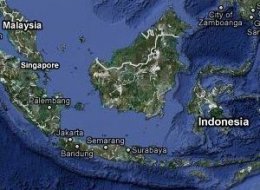Welcome to my world. Enjoy!
Unemployment: State by State
Jobless Rate Rose in 30 States inJanuary, Five Hit Records
Unemployment rose in most states in January--even breaking records in several states, according to government data released Wednesday.Joblessness in five states--California (12.5 percent), South Carolina (12.6 percent), Florida (11.9 percent), Georgia (10.4 percent), and North Carolina (11.1 percent)--hit a record high. The District of Columbia, at 12.0 percent, also reached a record high.
In all, 30 states and the District of Columbia saw their rates increase in January over the previous month. Nine states reported a decrease and 11 states had no change in their unemployment, according to the Labor Department.
Fewer states showed an increase in their unemployment rate in January compared with December, when 43 states showed an increase in jobless rates.
=========================================
"It shows that the labor market is virtually frozen," said Nick Colas, chief market strategist at the ConvergEx Group. Although the data is from January, he said that "there has not been any dramatic change in these past six weeks."
The national unemployment rate was at 9.7 percent in January, down from 10 percent in December 2009. The unemployment rate remained at 9.7 percent in February.
Michigan, again, had the highest jobless rate in the nation, though it eased to 14.3 percent from 14.5 percent in December. Michigan's unemployment rate has hovered over 14 percent since July 2009.
"Michigan's unemployment rate fell slightly, as typical January auto industry job cuts did not occur in January 2010," said Rick Waclawek, director of Michigan's Bureau of Labor Market Information and Strategic Initiatives in a statement. "Also, jobs in a number of Michigan industry sectors, including manufacturing, have stabilized since the summer of 2009."
Behind Michigan, Nevada had the second highest jobless rate in the country with 13 percent, followed by Rhode Island (12.7 percent), South Carolina (12.6 percent), and California (12.5 percent).
North Dakota again had the lowest jobless rate in country at 4.2 percent in January, followed by Nebraska (4.6 percent) and South Dakota (4.8 percent).
Separately on Tuesday, the Bureau of Labor Statistics reported a sharp increase in job openings in January. There were 2.7 million job openings in that month, up 7.6 percent from December. That was the highest number of openings since February 2009.



